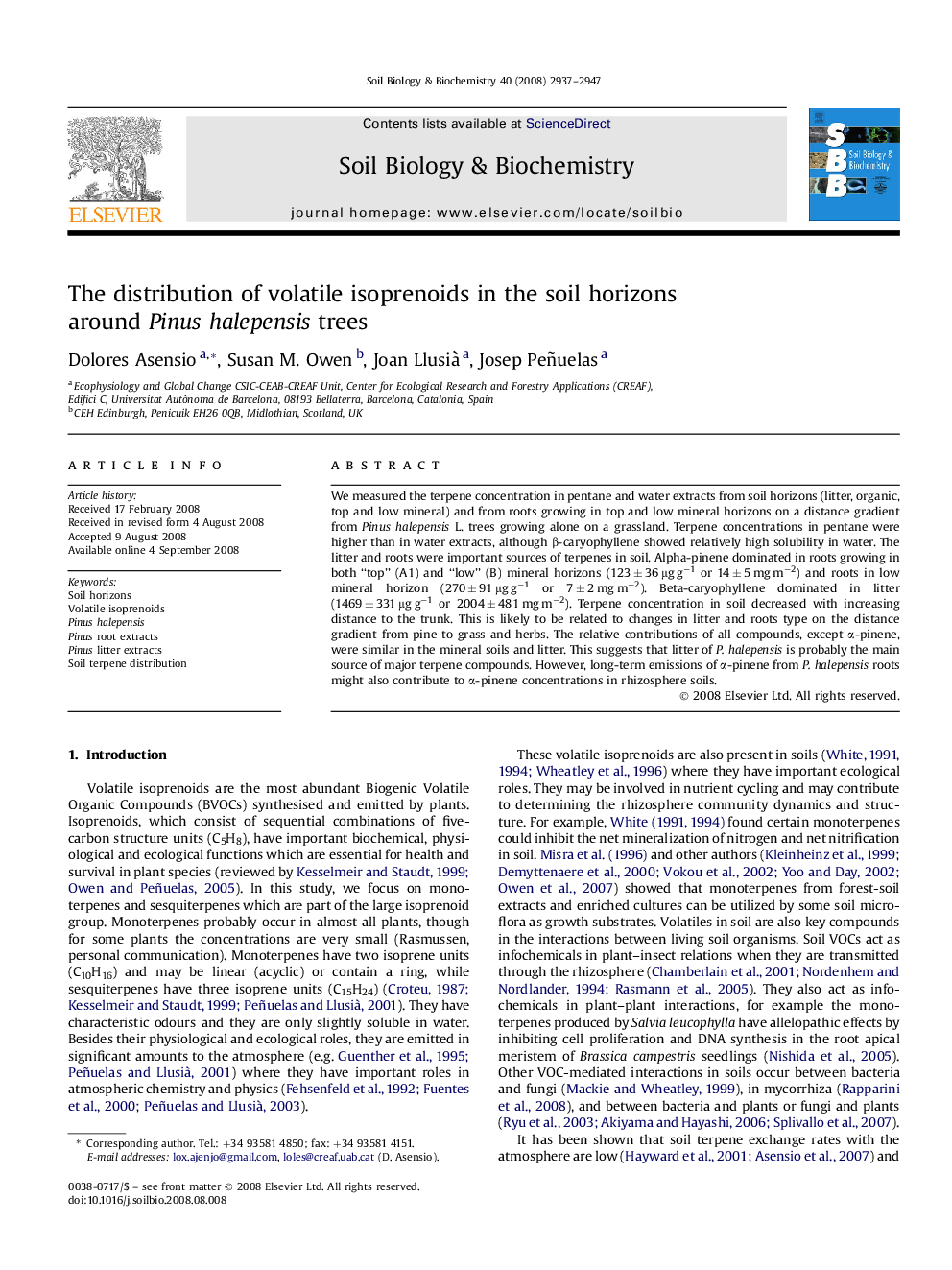| Article ID | Journal | Published Year | Pages | File Type |
|---|---|---|---|---|
| 2026292 | Soil Biology and Biochemistry | 2008 | 11 Pages |
We measured the terpene concentration in pentane and water extracts from soil horizons (litter, organic, top and low mineral) and from roots growing in top and low mineral horizons on a distance gradient from Pinus halepensis L. trees growing alone on a grassland. Terpene concentrations in pentane were higher than in water extracts, although β-caryophyllene showed relatively high solubility in water. The litter and roots were important sources of terpenes in soil. Alpha-pinene dominated in roots growing in both “top” (A1) and “low” (B) mineral horizons (123 ± 36 μg g−1 or 14 ± 5 mg m−2) and roots in low mineral horizon (270 ± 91 μg g−1 or 7 ± 2 mg m−2). Beta-caryophyllene dominated in litter (1469 ± 331 μg g−1 or 2004 ± 481 mg m−2). Terpene concentration in soil decreased with increasing distance to the trunk. This is likely to be related to changes in litter and roots type on the distance gradient from pine to grass and herbs. The relative contributions of all compounds, except α-pinene, were similar in the mineral soils and litter. This suggests that litter of P. halepensis is probably the main source of major terpene compounds. However, long-term emissions of α-pinene from P. halepensis roots might also contribute to α-pinene concentrations in rhizosphere soils.
